
Did you know that one mahogany tree can produce enough wood for expensive furniture? This furniture can be worth tens of thousands of dollars. It takes over 25 years for the tree to grow in the wild.. This fact shows the great value and vulnerability of one of the most desired hardwoods in the world.
Table of Contents
What is mahogany wood?
Mahogany wood is known for its deep, rich colors and strong durability. It has been a symbol of quality and luxury in fine woodworking for a long time. Its use spans a myriad of applications, from exquisite furniture pieces to robust shipbuilding. This section explores the key features of Mahogany (Swietenia Macrophylla). It explains why it is a popular choice for craftsmen and designers.
Physical and Mechanical Properties
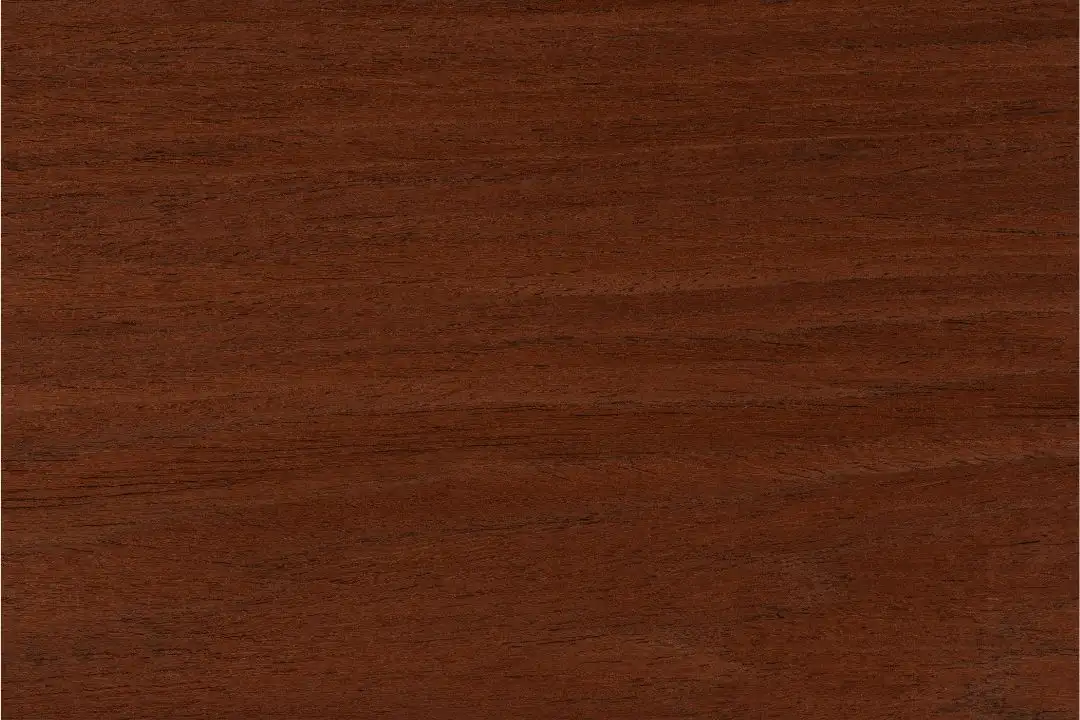
| Characteristic | Description |
|---|---|
| Common Names | Mahogany, Genuine Mahogany, Honduran Mahogany, American Mahogany |
| Scientific Name | Swietenia Macrophylla |
| Distribution | Central and South America, and parts of the Caribbean |
| Tree Size | 150-200 ft (46-60 m) tall, 3-6 ft (1-2 m) trunk diameter |
| Average Dried Weight | 40-55 lbs/ft³ (640-880 kg/m³) |
| Specific Gravity (Basic, 12% MC) | .55, .64 |
| Janka Hardness | 800-1200 lbf (3,570-5,340 N) |
| Modulus of Rupture | 11,500-17,500 psi (79.3-120.7 MPa) |
| Elastic Modulus | 1,400,000-1,750,000 psi (9.65-12.07 GPa) |
| Crushing Strength | 6,800-8,500 psi (46.9-58.6 MPa) |
| Shrinkage | Radial: 3-4%, Tangential: 6-8%, Volumetric: 10-12%, T/R Ratio: 1.5-2 |

Mahogany Wood Color, Grain, and Texture
Mahogany is renowned for its rich, reddish-brown hue that matures into a deeper, more refined color over time. Its grain is typically straight, though it can display figures like waves or curls that enhance its beauty. The fine texture of Mahogany wood gives it a very smooth and shiny finish. This makes it a popular choice for high-end furniture and detailed cabinets.
Density and Hardness
Mahogany has an average dried weight of 40-55 lbs/ft³ (640-880 kg/m³). This wood is a great mix of density and ease of use. This balance makes sure the wood is hard enough to resist wear. It also makes it easy for craftsmen to shape into detailed designs.
Durability and Resistance to Decay
Mahogany has natural oils that help it resist decay, rot, and insects. This makes it a great choice for outdoor furniture and structures. Mahogany wood is strong and beautiful. This makes it a popular choice for building boats.
Historical Background
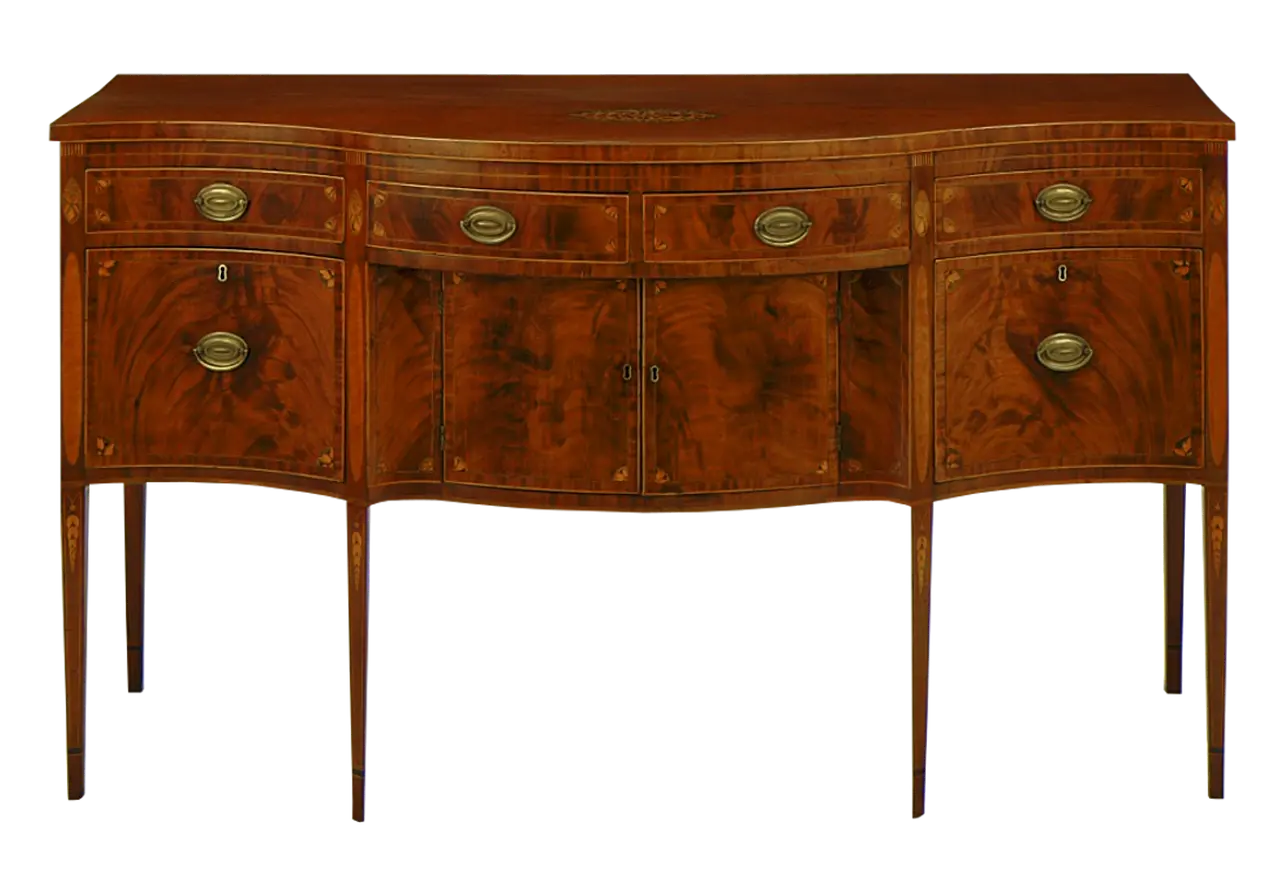
Mahogany wood has a rich history that goes back to the 16th century. Spanish explorers first found it in the Americas. Its origins come from the tropical areas of the Americas. This includes Central and South America and parts of the Caribbean.
Mahogany quickly gained popularity due to its exceptional qualities, including its durability, attractive reddish-brown color, and ease of workability. It became highly sought after for furniture making, shipbuilding, and decorative woodwork.
During the colonial era, mahogany was important for trade and commerce. European powers took advantage of the Americas’ natural resources, including mahogany forests, to grow their economies. This led to extensive deforestation and exploitation of indigenous populations in some regions.
By the 18th century, mahogany wood was a symbol of luxury and status. It decorated the homes of rich people in Europe and America. Its popularity continued to soar into the 19th and 20th centuries, despite concerns about deforestation and sustainability.
Types of Mahogany Wood
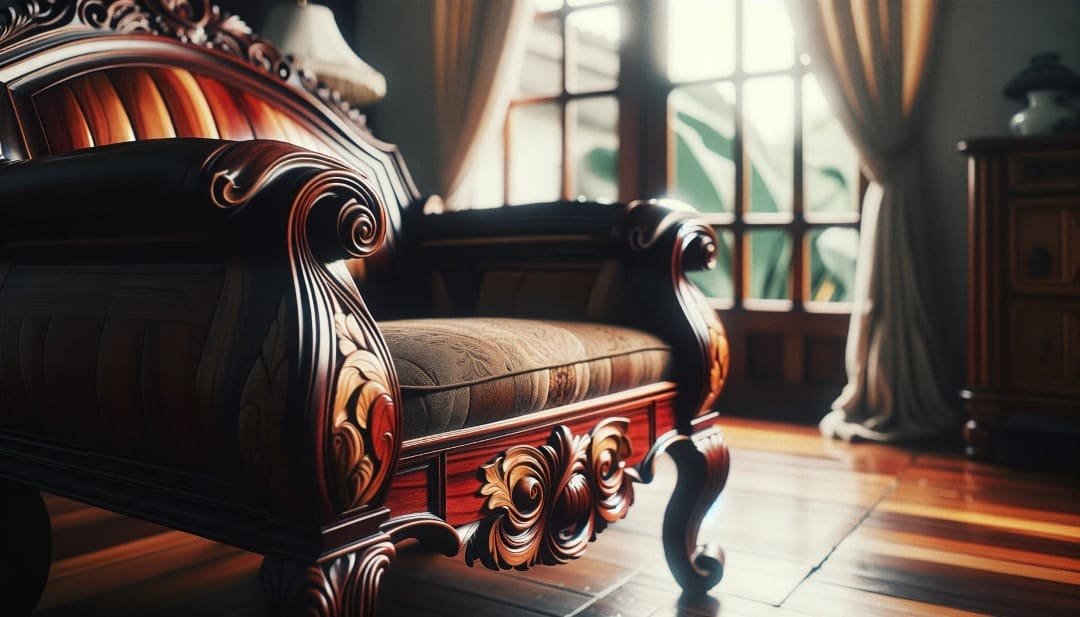
Genuine Mahogany (Swietenia Macrophylla)
Genuine Mahogany (Swietenia Macrophylla) comes from Central and South America. It is a valued hardwood. It is known for its fine grain, beautiful reddish-brown color, and great workability. It is strong and does not decay. This makes it perfect for high-end furniture, luxury yachts, and musical instruments. Because of overharvesting, genuine mahogany is now rare and costly. This has led to using sustainable sourcing practices to protect it for future generations.
African Mahogany (Khaya spp.)
African Mahogany (Khaya spp.) is a popular hardwood used as an alternative to genuine mahogany. It features a similar appearance with a reddish-brown color and interlocked grain pattern. African Mahogany is known for being easy to work with. It is durable and resists decay. This makes it great for furniture, cabinets, and boat building. It’s easier to find and more sustainable than real mahogany. This makes it a popular choice for eco-friendly projects and for people who want the look of mahogany at a lower price.
Philippine Mahogany (Toona calantas)
Philippine Mahogany (Toona calantas) is often called “mahogany” in the lumber market. It is not a true mahogany, but it is valued for its similar look and usefulness. It has a reddish color and a grain pattern that can vary widely. This wood is less expensive and is commonly used in furniture, boat building, and interior finishes. While not as durable or resistant as genuine mahogany, Philippine Mahogany wood offers a cost-effective alternative for projects requiring a mahogany-like appearance.
Applications in Woodworking and Construction
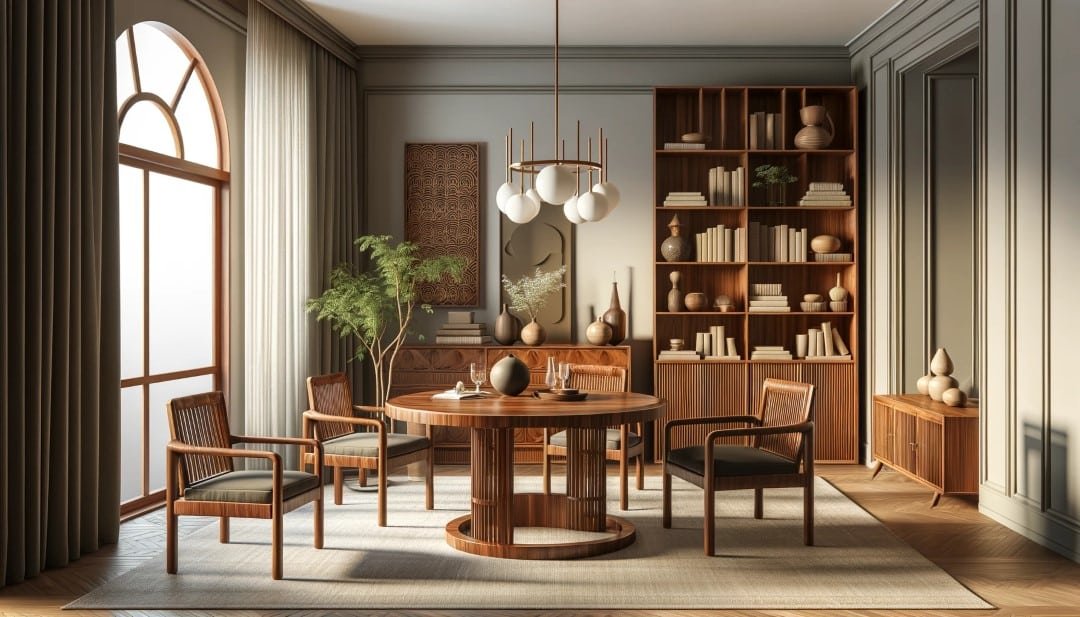
Mahogany’s exceptional beauty and durability make it a favored material for a wide range of projects. Its applications span from intricate furniture and cabinetry to robust architectural elements and boat building. The wood’s workability, coupled with its aesthetic appeal, allows for creativity and functionality in designs.
Woodworking
- Furniture Making: Mahogany wood is widely used to make fine furniture. It is strong, easy to work with, and has beautiful grain patterns. Its rich color and texture make it a favorite for making tables, chairs, cabinets, and other fine furniture.
- Cabinetry and Joinery: The wood is stable and easy to work with. This makes it great for detailed cabinetry, like kitchen cabinets, bookcases, and wardrobes. Its resistance to warping and shrinking contributes to the longevity and quality of the final product.
- Musical Instruments: Mahogany’s tonal qualities make it a popular choice for musical instruments, particularly guitars and pianos. It is used for both the body and the neck of guitars, offering a warm, rich sound that is highly sought after by musicians.
- Decorative Items and Carvings: The wood has a fine grain and is easy to work with. This makes it great for detailed carvings and decorative items, like sculptures, ornamental panels, and moldings. Its aesthetic appeal enhances the visual impact of these creations.
- Boat Building: Mahogany wood has been used in boat building for a long time. It resists rot and decay when treated well. It is especially favored for constructing the hulls and decks of boats and yachts.
Construction
- Flooring: Mahogany wood flooring is prized for its durability, color, and distinctive grain. It adds warmth and elegance to interiors, making it a popular choice for residential and commercial spaces.
- Doors and Windows: Mahogany wood is strong and beautiful. It is a great choice for doors and window frames. It looks good and lasts a long time. It also resists the weather well.
- Architectural Millwork: Mahogany is often used for architectural details, including moldings, trims, and railings. Its ability to be easily shaped and polished allows for beautiful architectural features.
- Outdoor Decking and Furniture: Treated mahogany is great for outdoor decking and patio furniture. It looks beautiful and resists weather, pests, and decay. Its durability makes it suitable for outdoor environments, where it can last for many years with proper maintenance.
- Structural Uses: Mahogany wood is not as common for structural uses as for its beauty. However, it can be used in strong and stable elements. This is more typical in historical or special buildings because of the wood’s cost and availability.
In summary, mahogany wood is versatile, durable, and attractive. These qualities make it a popular choice for many woodworking and construction projects. Its use in both traditional and modern designs underscores its timeless appeal and enduring value.
Environmental Impact and Sustainability
As the demand for Mahogany has grown, so has the concern for its environmental impact. Illegal logging and deforestation have threatened Mahogany’s sustainability. Programs and rules help with responsible sourcing. One example is the Convention on International Trade in Endangered Species (CITES). Another example is the Forest Stewardship Council (FSC).
- Conservation Status: Efforts are underway to protect Mahogany wood populations and their habitats. Sustainable management practices are critical to preserving this valuable resource for future generations.
- Sustainable Sourcing Practices: Consumers and manufacturers can contribute to Mahogany’s sustainability by choosing wood from certified sources that adhere to responsible forestry practices.
Maintenance and Care
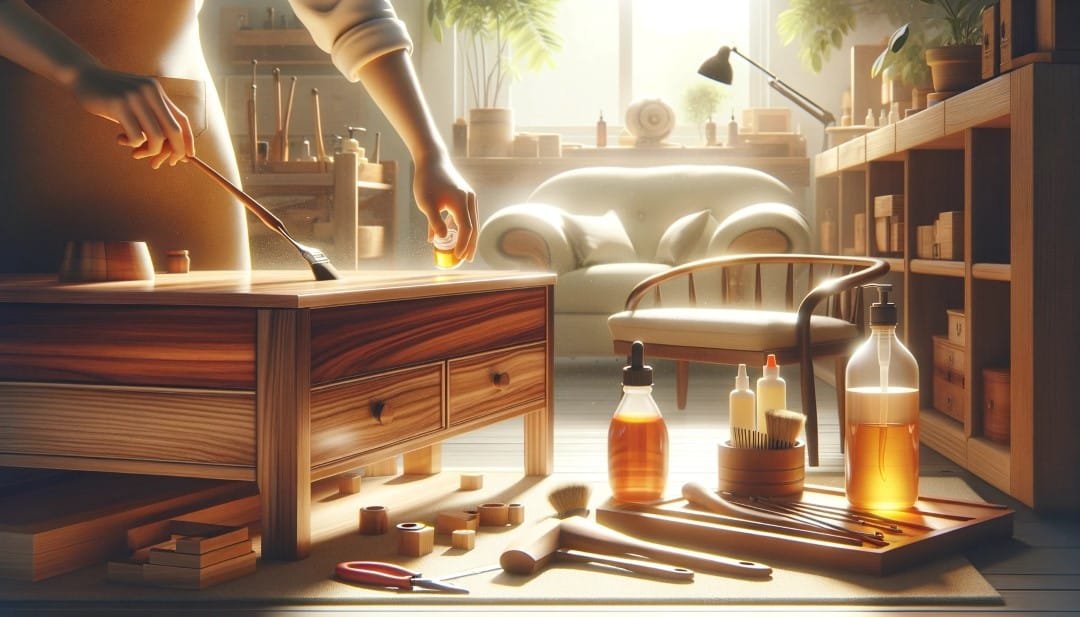
To maintain the beauty and longevity of Mahogany wood, proper care is essential. To keep Mahogany furniture and fixtures looking great, dust regularly. Avoid direct sunlight and big changes in humidity. Use the right cleaning and polishing products.
- Caring for Mahogany Wood: Using a good wood oil or wax can make Mahogany shine. It also adds a protective layer. For outdoor Mahogany furniture, periodic sealing is recommended to protect against moisture and UV damage.
Cost and Availability
Mahogany’s desirability often comes with a higher price tag, reflecting its quality and the challenges of sustainable sourcing. The wood is durable and has a timeless appeal. This makes it a good investment for those wanting elegance and long-lasting quality in their projects.
- Factors Affecting Price: The cost of Mahogany can vary based on type, quality, and certification. Genuine Mahogany typically commands a higher price due to its superior characteristics and limited availability.
- Tips for Buying Mahogany Wood: Look for suppliers and choose certified Mahogany. This way, you get quality wood and support sustainable forestry practices.
Comparative Analysis: Mahogany vs. Other Hardwoods
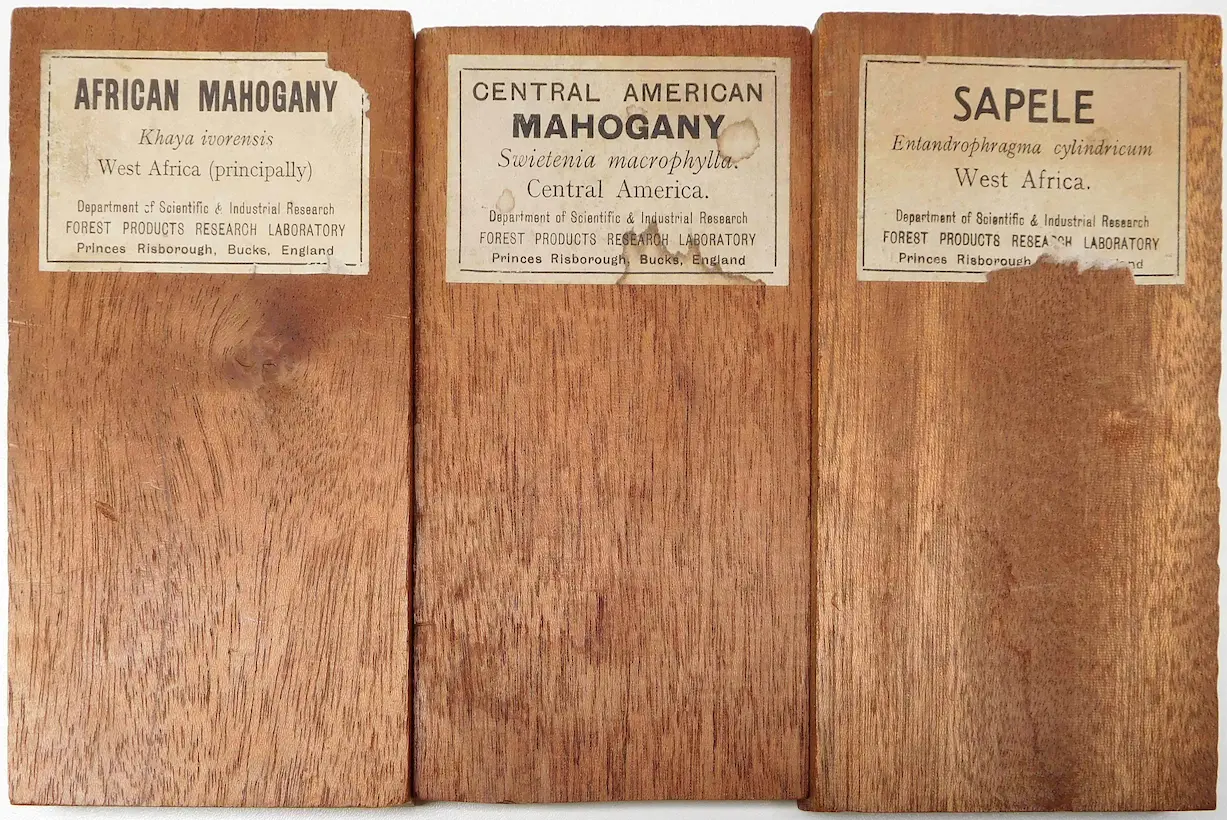
When considering Mahogany for your next project, it’s helpful to compare it with other popular hardwoods. Each wood type has its unique characteristics, benefits, and drawbacks, making some more suitable for certain applications than others.
Mahogany vs Oak:
mahogany is prized for its beauty, workability, and reddish-brown color, often used in fine furniture and luxury items. Oak is strong and durable. It has a noticeable grain. People often use it for flooring, cabinets, and traditional furniture. Mahogany offers a classic, elegant look, while oak provides a more rustic and robust appearance. Mahogany is usually more expensive and is linked to high-end projects. Oak, on the other hand, is easy to find and is a budget-friendly choice for many uses.
Mahogany vs Maple:
mahogany wood and maple are both popular in woodworking but serve different purposes due to their characteristics. Mahogany has a reddish-brown color that gives a classic and elegant look. It is easy to work with, making it great for fine furniture and decorative items. Maple is strong and hard. It has a light color and can show unique grain patterns. These patterns include birdseye and quilted maple. Because of these features, maple is popular for flooring, cutting boards, and musical instruments. Mahogany is often chosen for its aesthetic appeal, while maple is selected for durability and its distinctive grain patterns.
Mahogany vs Cherry:
mahogany wood and cherry wood are both valued for their beauty and durability in woodworking. Mahogany has a smooth grain and a reddish-brown color that gets darker with time. It is known for its classic look and ease of use. It’s often used in high-end furniture and boat building. Cherry wood has a smooth grain and ranges from light pink to reddish-brown, darkening with age to a rich patina. It is popular for furniture, cabinetry, and musical instruments. Mahogany wood is usually more expensive and linked to luxury items. Cherry wood is a more affordable option. It has a unique aging process that many woodworkers and designers like.
Mahogany vs Sapele wood:
mahogany wood and Sapele wood are both popular hardwoods used in furniture making and woodworking. Mahogany wood is known for being strong and easy to work with. It has a classic reddish-brown look. However, it can be costly and not very sustainable. Sapele is a cheaper and more sustainable option. It has similar durability and a darker, richer appearance with a unique grain. Their choice often depends on budget, project requirements, and personal preference for aesthetics.
DIY Projects with Mahogany

Mahogany’s workability and aesthetic appeal make it an excellent choice for DIY enthusiasts. Here are a couple of project ideas that can be enhanced by the qualities of Mahogany:
1. Custom Cutting Board
- Skill Level: Beginner
- Description: Create a custom cutting board using mahogany wood. Its durability makes it perfect for kitchen use. You can make it special by adding other hardwoods for a striped look or engraving a design on it.
2. Jewelry Box
- Skill Level: Intermediate
- Description: Craft a beautiful, small jewelry box. Mahogany’s fine grain and workability make it ideal for creating detailed work, such as dovetail joints. Finish it with a high-quality wood oil to enhance its natural color.
3. Coffee Table
- Skill Level: Intermediate to Advanced
- Description: A mahogany coffee table can be a stunning centerpiece in any living room. You can design it with a modern, simple style or choose a traditional look with detailed carvings and turned legs.
4. Bookshelf
- Skill Level: Intermediate
- Description: Build a durable and elegant bookshelf for your home office or library. The natural beauty of mahogany adds warmth to any room, and its strength ensures the shelf can hold a substantial amount of weight.
5. Adirondack Chair
- Skill Level: Intermediate
- Description: Construct a comfortable, durable Adirondack chair for your garden or patio. Mahogany’s resistance to rot and decay makes it an excellent choice for outdoor furniture.
6. Picture Frames
- Skill Level: Beginner to Intermediate
- Description: Handmade picture frames are a great way to preserve memories. Use mahogany wood to create frames, and customize the size and shape to fit your photographs or artwork perfectly.
7. Wooden Watch or Clock
- Skill Level: Advanced
- Description: If you have the right tools and some patience, making a wooden watch or clock from mahogany can be a fun project. The wood’s fine texture allows for detailed work, making your timepiece a unique work of art.
8. Wine Rack
- Skill Level: Intermediate
- Description: A mahogany wine rack offers useful storage and adds elegance to your dining room or kitchen. Design it to hold as many bottles as you like, and include spaces for hanging wine glasses.
9. Guitar Stand
- Skill Level: Intermediate
- Description: If you love music, a custom guitar stand can be a great addition to your home. It is made of mahogany, which makes it both useful and beautiful. The strength of the wood ensures your instrument’s safety, while the aesthetic appeal complements its design.
10. Decorative Wooden Bowls
- Skill Level: Advanced
- Description: With the right tools, such as a lathe, you can turn mahogany into stunning decorative bowls. The rich color and grain of the wood make each piece a unique addition to your home décor.
Tips for Working with Mahogany:
- Preparation: Properly prepare the wood by sanding it smoothly before starting your project to ensure the best finish.
- Finishing: Mahogany takes finishes well, so consider using a finish that enhances its natural color and protects the wood.
- Tools: Ensure your tools are sharp to achieve clean cuts and minimize tear-out, which is especially important when working with high-quality wood like mahogany.
These projects can help you discover the beauty and usefulness of mahogany. You can create something functional, decorative, or both. With proper care, mahogany wood items can last for many years. This makes your DIY project a lasting piece of art.
Conclusion
Mahogany wood’s unmatched versatility and aesthetic appeal have cemented its status as a cornerstone in woodworking and design. Its rich color, durability, and workability make it the preferred choice for a variety of high-quality projects. As we look ahead, focusing on sustainable sourcing and caring for the environment will change how we use Mahogany. By focusing on conservation and responsible management, we make sure Mahogany is available for future generations. This helps keep its legacy as a valued material in fine craftsmanship. The future of Mahogany is not only about saving a resource. It is also about celebrating a tradition of quality and sustainability in woodworking.
FAQs
How do I identify genuine Mahogany?
Genuine Mahogany has a distinctive reddish-brown color, straight grain, and fine texture. It darkens over time and has a uniform appearance that sets it apart from similar woods.
Can Mahogany be used outdoors?
Yes, Mahogany resists rot and decay, making it good for outdoor use. However, it needs proper treatment and care to last longer.
Why is Mahogany more expensive than other woods?
Mahogany’s cost reflects its quality, rarity, and the demand for sustainable sourcing. Its enduring appeal and longevity often justify the investment.
What makes Mahogany wood so special?
Mahogany is renowned for its exceptional durability, beautiful grain, and rich color. Its versatility makes it ideal for a wide range of applications, from fine furniture to boat building.
Is Mahogany wood sustainable?
While Mahogany has faced sustainability challenges, efforts through certifications like FSC ensure responsible sourcing. Choosing certified Mahogany supports sustainable practices.








